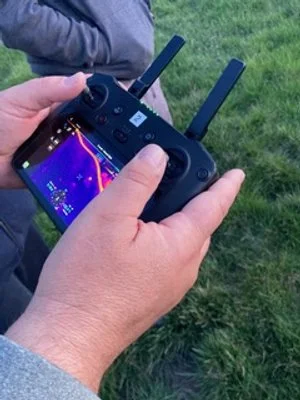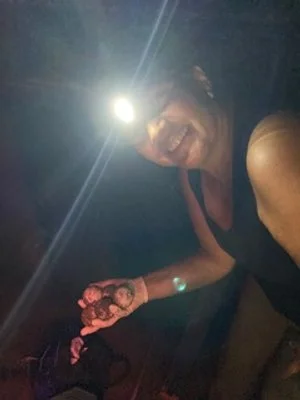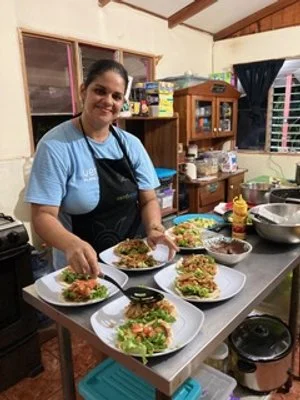The Drone Experience
In April 2024, I asked my local police if their drone team could test whether a thermal drone could detect a turtle at night. They agreed—but I needed a turtle.
A neighbor with a “Turtle House” sign let me borrow his 80 lb tortoise, Tyrion. During the test, the drone picked up Tyrion’s body heat from 90 feet in the air—proving the concept worked.
The success sparked a vision. In 2025, I founded Drones4wildlife.org, earned my drone pilot’s license, and traveled to Puerto Rico to observe thermal drones tracking endangered leatherbacks. Seeing it firsthand confirmed this technology can transform turtle conservation.
Tyrion arriving at police station.
Thermal drone testing of Tyrion
Our Projects
Using Thermal Drones to Protect Sea Turtles
In May 2025 I spent a week in Puerto Rico and and learned first hand how much work goes into protecting sea turtles. One of the most powerful tools researchers used was a thermal drone, which could spot turtles from a distance without disturbing them. Instead of walking long stretches of beach in the dark, we could quickly locate nesting turtles and gather critical data and information.
In some cases, due to rising tides we relocated the nest to safer higher ground.
Combining local knowledge with this technology showed me how innovation can strengthen conservation. Seeing these incredible creatures up close—and the dedication of the people protecting them—deepened my passion for sea turtle conservation.
sea turtle Hatchery
In August 2023, I volunteered at a sea turtle hatchery in Costa Rica. The work was grueling—night patrols, heat, storms, poachers, and long treks along dark beaches—but I kept going. Then one night under a full moon, I watched a female turtle quietly lay her eggs in the sand. In that moment, it felt sacred, like witnessing something ancient and profoundly important.
When Conservation Empowers Communities
While volunteering in Costa Rica, I became close with the camp’s cook—a woman who had once poached turtle eggs to survive. In remote communities, poaching is often generational, and turtle eggs still sell on the black market. After being offered a job with the project, she chose a different path. Her story showed me how conservation isn’t just about protecting sea turtles—it’s about giving communities new opportunities and a deeper appreciation for the animals they’ve lived alongside for generations.





